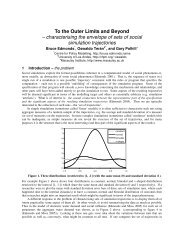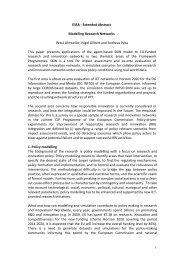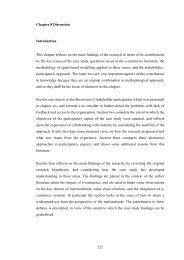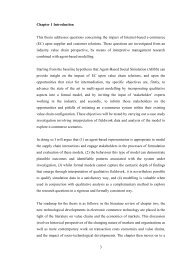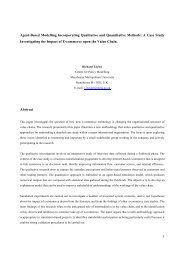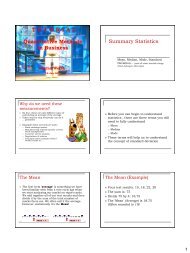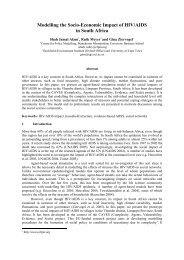7 Chapter 2 Literature Review: Markets, Intermediation and E ...
7 Chapter 2 Literature Review: Markets, Intermediation and E ...
7 Chapter 2 Literature Review: Markets, Intermediation and E ...
You also want an ePaper? Increase the reach of your titles
YUMPU automatically turns print PDFs into web optimized ePapers that Google loves.
<strong>and</strong> coordination of activities across business partnerships. Extranets foster<br />
collaboration because they enable access to internal systems <strong>and</strong> data of business<br />
partners. In the eyes of Watson <strong>and</strong> McKeown, extranets constitute a third form of<br />
electronic commerce:<br />
“Extranets do more than extend IOS to a greater number of partners. They offer a<br />
new way of fashioning interorganisational structures by altering information<br />
structures <strong>and</strong> decision functions. Extranets are further evidence that the widespread<br />
adoption of Internet technology will fundamentally change commerce.” (Watson <strong>and</strong><br />
McKeown 1999, pg. 43)<br />
2.6 The Value Chain <strong>and</strong> the Impact of EC<br />
Interorganisational systems can therefore be thought of as systems to link partners in<br />
the value chain model. This model describes how the different stages of business<br />
operations are organised, including all processes involved in designing,<br />
manufacturing, <strong>and</strong> distributing products from the initial blueprints to the final<br />
delivery to the end user. Each step in the chain adds value to the overall operation.<br />
Traditionally, this perspective views a company as a chain of activities. Porter (1985)<br />
distinguishes between value chains, describing activities internal to one company, <strong>and</strong><br />
value systems, describing several organisations, each carrying out different processes<br />
<strong>and</strong> linking them with its trading partners. However, we are not going to make the<br />
distinction here, as many researchers use both terms to discuss interorganisational<br />
processes.<br />
A large company may control several steps in the value chain <strong>and</strong> will obviously be<br />
aiming to improve in as many areas as possible. However, extensive value chains<br />
often suffer from problems with the information flow, where some of the links might<br />
not be as good as others in providing the necessary information. In order to ensure the<br />
greatest benefits are attained, all of the links should perform well. There should be no<br />
weak links in the chain acting to block or suppress the flow of information (in both<br />
directions). The development of new ICT, <strong>and</strong> in particular e-commerce technology,<br />
33




